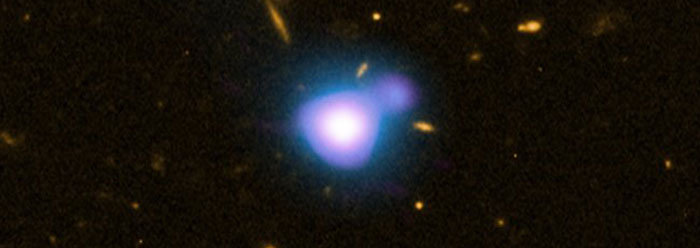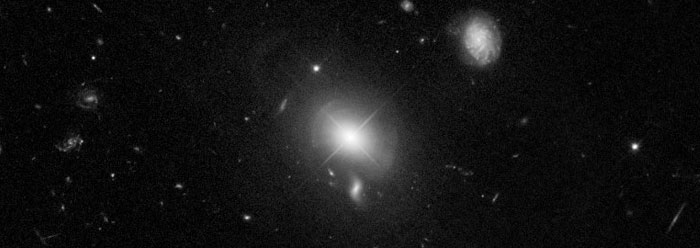Astronomers recently found a distant collection of quasars. But those quasars shouldn’t exist. And while they certainly appear connected, they’re spread too far across space for standard secular models of the structure and origin of the universe to accommodate. “It is the largest structure ever seen in the entire universe,” according to astrophysicist Roger Clowes from the University of Central Lancashire.1
Clowes led a team of researchers, who published their discovery in The Monthly Notices of the Royal Astronomical Society,2 in analyzing data from the Sloan Digital Sky Survey. They found quasars that are connected across a distance that far exceeds the predictions by an assumption tightly linked to the Big Bang, called the “Cosmological Principle.” The distances certainly exceed imagination.
Creation physicist D. Russell Humphreys wrote in 2003,
The foundational assumption of the Big Bang theory [is] the “Copernican Principle” or “Cosmological Principle,” which requires that matter uniformly fill all space at all times—even at the very beginning. Since there would never be any empty space around the matter, there could never be a boundary around the matter. Lacking such a boundary, we could never determine a unique center, such as a center of mass, inside it.3
The Cosmological Principle assumes no center or edge, with its matter evenly distributed over large scales. Accordingly, it proposes no unique places throughout the universe. Of course, this confronts Scripture, which clearly indicates that the earth is the center of God’s focus on redeeming men and women from the beginning until now. Secular cosmologists must assume that the Cosmological Principle is valid because their totally discredited Big Bang cosmology rests on it. But empirical evidence finds itself arrayed against it.
Clowes told the Royal Astronomical Society, “This is significant not just because of its size but also because it challenges the Cosmological Principle, which has been widely accepted since Einstein.”1
A competing perspective, called the Anthropic Principle, assumes that unique places can exist within the universe. Specifically, it suggests that the earth was uniquely designed for human survival and enjoyment.4 Whereas the Cosmological Principle has not found supporting evidence, the stunningly improbable collection of earth’s life-friendly parameters does support the Anthropic Principle.
If space is uniform in all directions, as held by the Cosmological Principal, then it should not contain any structures larger than about a billion light-years wide. But Clowes’ team found this strung-out cluster of quasars—very high energy centers of mass that evolutionists believe to be the predecessors of whole galaxies—that stretches 1.5 billion light years across its center. Its longest dimension measures almost four billion light years!1
Clowes’ observation shatters this Big Bang assumption multiplied by four. “This is hugely exciting—not least because it runs counter to our current understanding of the scale of the universe.”1 It is exciting also because it runs counter to a core secular assumption about the origin of the universe. Without the Cosmological Principle, there is no Big Bang. In the process, this news adds confirmation to the Bible-friendly Anthropic Principle.
References
- Astronomers discover the largest structure in the universe. Royal Astronomical Society press release, January 11, 2013.
- Clowes, R. et al. A structure in the early Universe at z ∼ 1.3 that exceeds the homogeneity scale of the R-W concordance cosmology. The Monthly Notices of the Royal Astronomical Society. Published online before print, January 11, 2013.
- Humphreys, D. R. Prestigious Journal Endorses Basics of Creationist Cosmology. Institute for Creation Research. Posted on icr.org, December 1, 2003, accessed January 16, 2013.
- Guillermo, G. and J. W. Richards. 2004. The Privileged Planet: How our Place in the Cosmos is Designed for Discovery. Washington, D.C. : Regnery Publishing, Inc.
Image credit: NASA
* Mr. Thomas is Science Writer at the Institute for Creation Research.
Article posted on January 18, 2013.























